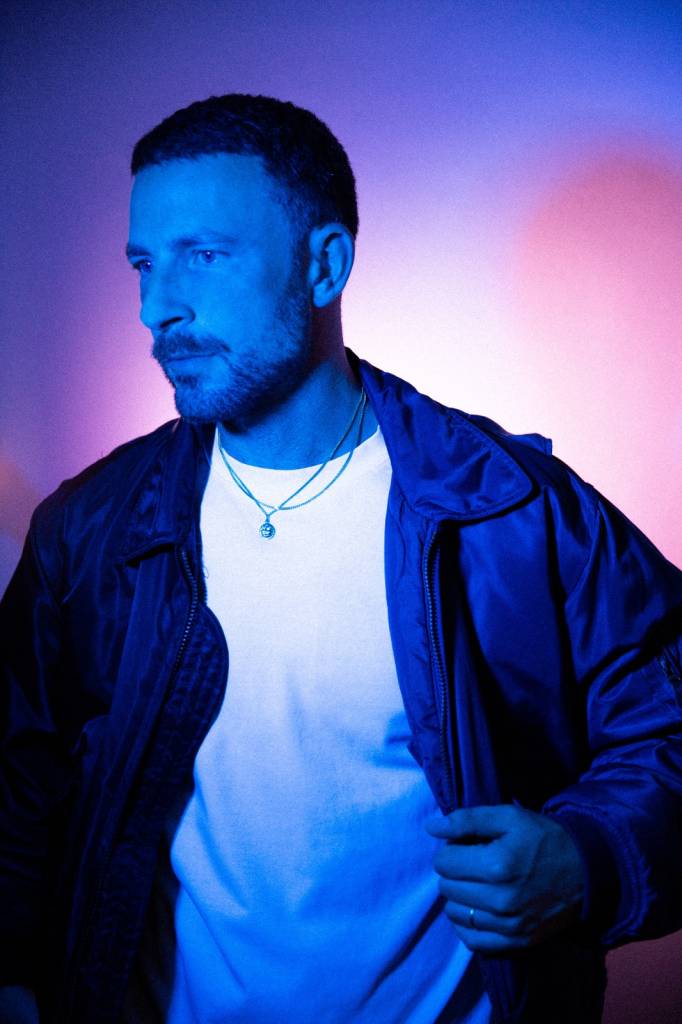IN CONVERSATION WITH SHLØMO
Since his emergence on his own label Taapion Records in 2013, French producer and DJ Shlømo has captivated audiences with his remarkable talent. Widely acclaimed for his diverse musical range, he seamlessly traverses genres, from techno to ambient and IDM, earning him a devoted following.
Over the years, Shlømo has solidified his position in the industry. His discography boasts numerous EP releases, and he has successfully launched two labels and two distinct musical projects. Notably, he has graced prestigious venues such as Berghain/Panorama Bar and various festivals including Neopop and Awakenings, leaving an indelible mark on the global techno scene.
As a performer, Shlømo’s versatility shines through. His dynamic live sets embody his unique approach to techno, seamlessly blending elements of rave, powerful beats, breaks, and IDM. With each performance, he takes audiences on an enthralling sonic journey.
In this conversation we talked about his journey through sound, industry and scene, his sexy nickname and much more…
–
Shlømo, your journey in the techno scene has been exceptional. What influences and experiences have shaped your unique take on techno and where do you see yourself currently?
It has been almost 12 years since I entered the scene, and I have witnessed its evolution alongside my own. I consider my residency at Concrete, a prominent club in Paris during the 2010s, as the pivotal point that anchored me professionally in this industry. It allowed me to develop myself as both a producer and a DJ, leading to opportunities to perform in renowned venues like Berghain and Awakenings worldwide. While I initially started with a deeper style of techno, about five years ago, I felt a strong desire and need to explore a more radical and intense form of techno. As an artist, it is essential to evolve, take risks, while always staying true to what one loves and finding personal satisfaction. It was during this time that Possession, a well-known LGBTQ+ crew known for their techno raves, approached me to become a resident at their events. I accepted because it aligned with my artistic direction.
Although I haven’t been influenced directly by techno artists in general, I have always been fascinated by IDM and electronica from the late ’90s and early ’00s, such as Warp Records, and artists like Aphex Twin or Boards of Canada. I feel a strong connection to the current scene, and I genuinely enjoy what I do. I derive immense pleasure from performing, producing, and nurturing new artists within the scene, embracing my role as a guiding figure “papa” in the world of techno.
Your track Welcome Back Devil is one of your major successes. Can you tell us a bit about your inspirations and influences for it?
This particular track came together in an unusual manner, without any hardware and not in my studio. I was on tour, one evening before a performance, and I had the idea to create a rave anthem with minimal tracks, keeping it as simple as possible. For an artist, it’s always challenging to determine when a track is complete, so I wanted to avoid excessive layering of sounds at all costs. After 30 minutes, I had completed 99% of the track, which I ended up playing that same evening, receiving immense feedback from the crowd. I quickly realized that this track would be significant in my career, as it would firmly establish my transition to a harder techno sound.
A fun fact is that this track exploded in popularity 8 or 9 months later, following its release, during the first raves after the summer of 2020 amid the COVID-19 pandemic. I believe people were searching for a sound that would make them feel unleashed, and they were able to experience that through Welcome Back Devil.
Viper Diva is another project you are part of that started after being successful as Shlømo. What is the identity and highlight of each project?
Viper Diva was a project that I initially started with Hadone, but we diverged artistically along the way. It was important to separate VD from Shlømo musically. While Shlømo represents a harder techno sound or more experimental tracks, Viper Diva will maintain the same spirit as its first two EPs, incorporating a trance-like touch but with a powerful edge, featuring vocals and a futuristic pop vibe. Viper Diva was initially inspired by our shared passion for the group Crystal Castles, and in fact, the track “Alice” is a tribute to the lead singer of the band.

You are the founder of two labels, Taapion and Saike, with a great mix of signed artists. What do you look for in new talents and their sound?
That’s a really good question, and it’s something I’ve been focusing on a lot lately. Being a label manager also comes with a great responsibility towards the scene, as it’s important to offer new things and discover new talents. Back in my time, it was much more challenging to reach established artists because social media didn’t have the same artist-crowd proximity it has today. That’s why I have always tried to highlight young artists. It started in 2018 with Hadone on Taapion, and I also frequently ask for tracks from unknown young artists through social media to promote and play their music. It’s also the best way to spot talented individuals. Saike will become a dedicated branch for techno trance music with a hint of pop, featuring upcoming signings from highly talented artists like Zorza and Krl mx. On the other hand, Taapion will have a wider scope, encompassing music ranging from hard techno to IDM. Above all, I’m always in search of that musical love at first sight moment. I’m not specifically looking for tracks within a particular style; it’s all about the connection and the impact the music has on me.
You once mentioned that you don’t prepare your sets in advance to be able to share the experience of your show with the crowd more intensely. What is your stance towards playing live sets now?
Yes, I usually select my first two tracks and my last two tracks, and then I create a playlist that I dive into during my set. It is important to me to go with the flow, to feel an exchange with the audience, and to avoid feeling constrained by a pre-arranged set. However, there are occasions when I prepare my sets track by track.
Here’s a fun fact: for my 8-hour all-night-long set in Rotterdam, I meticulously prepared 250 tracks arranged in a specific order to offer the crowd a true musical journey encompassing different styles. Twenty minutes before my set, just before loading the playlist onto my USB drive, I accidentally deleted the entire playlist from my computer with no possibility of retrieving it. After 15 minutes of nervousness, I decided to quickly upload as many tracks as possible to my USB drive and simply go with the flow for this all-night set. It was a bit disorienting, but at least time flew by unnoticed.
It’s noticeable that the techno scene has become more mainstream and commercial during the past few years. How do you perceive this and how did the scene change for you?
In the present day, I believe there is hardly anything left that can truly be considered underground. However, this isn’t necessarily a negative thing; it’s simply a reflection of reality, given that social media continues to play a significant role as a work tool.
I don’t belong to the older generation that criticizes the younger one. It’s crucial to recognize that club music predominantly belongs to the youth. They are the ones who go to clubs and raves frequently, and it’s important for us to both educate and listen to them. With the rise of social media as a powerful tool within the music scene, it has facilitated the promotion of emerging artists and has made techno music more accessible to a broader audience. I don’t view this development negatively. The new generation possesses a remarkable ability to transcend boundaries, seamlessly embracing rap and techno simultaneously, which serves as their strength. However, it’s worth noting that there still exists a thriving scene for those who appreciate the timeless essence of techno, even if its visibility online may be somewhat diminished.
Can you tell us a bit about upcoming projects and gigs we can expect from you to come soon?
I just released my new EP, Viper Diva, last April, and I have several projects and collaborations with young and talented artists that will be released in the coming months. I prefer to keep the names secret for now. I also loved collaborating with Vladimir Cauchemar, an electro rap artist. We managed to blend our universes to create the track GOD, one of my favorite projects. As for gigs, as you can guess, it’s festival season now, so be ready to see me everywhere in Europe, like at Solidays, Verknipt, Tomorrowland, Monegros, Neopop, Sziget, or Rotterdam Rave!
In August you will be playing at Neopop Festival. How do you perceive their events and what can we expect from your set?
Neopop is such an institution in Portugal and in Europe. I’m super glad to be part of such a great lineup. I already worked with the Neopop team last year, and they were so nice to me. As for my set, as usual, it will be full of unreleased tracks from talented artists, and you can easily expect some heavy bass.
Lastly, we came across your nickname Daddy. Where did that originate? What makes you the daddiest of them all?
I think it’s more for the audience to answer that 🙂
But I suppose it’s mainly because I’m a father in real life.
–
interview NADIA TEN HOVE
editor THORE DAMWERTH





